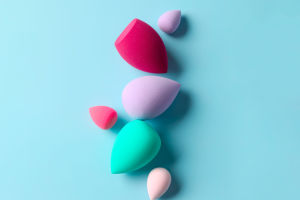Skateboarding isn't just a fun pastime for adrenaline junkies—it's a sport, a mode of transportation, and a creative outlet all in one. Over the years, it has grown from a niche activity into a global phenomenon, embraced by people of all ages and backgrounds.
Dear Lykkers! From the streets to skateparks, skateboarding offers a unique blend of freedom, physical challenge, and creativity.
The Origins of Skateboarding
From Surf to Sidewalk
Skateboarding began in the 1950s as an alternative for surfers when the waves weren’t cooperating. Surfers in California mounted wheels onto wooden boards, creating the first "land surfers." This early version of skateboarding gave rise to a culture that mixed surfing's free spirit with the urban environment. Over the decades, skateboarding has evolved into a popular sport, complete with competitions, professional athletes, and an undeniable influence on fashion and pop culture.
Skateboard Construction
Modern skateboards are built with durability and performance in mind. Typically made of 7-ply maple wood, skateboards consist of a deck (the flat board), trucks (the metal T-shaped parts connecting wheels to the deck), and wheels. The concave shape of the deck helps skaters control their movements during tricks, and various deck widths and lengths cater to different riding styles, whether you're cruising, street skating, or performing tricks in a park
Skateboarding as a Sport
Skills, Tricks, and Competitions
Skateboarding is more than just riding on a board—it's a full-body workout that requires balance, coordination, and creativity. Skaters perform tricks such as ollies, kickflips, and grinds, which take hours of practice to perfect. Skateboarding has even made its Olympic debut in 2021, solidifying its status as a serious competitive sport. Many cities also host local skate competitions, where riders showcase their skills, pushing the boundaries of what can be done on a skateboard.
Physical and Mental Benefits
Skateboarding offers a fun way to stay fit. The constant balancing, pushing, and trick attempts engage core muscles and improve flexibility. But it’s not just about the physical aspect; skateboarding builds mental resilience too. Every fall and failure becomes a learning experience, teaching skaters patience, persistence, and determination. This mental toughness translates into other areas of life, making skateboarding a great way to develop both body and mind.
Skateboarding Culture and Lifestyle
A Unique Subculture
Skateboarding has cultivated a unique subculture with its own language, style, and ethos. From the graffiti art that adorns skateparks to the laid-back, rebellious fashion of skaters, this sport has shaped youth culture for decades. Skateboarders value individuality and expression, often pushing boundaries both on and off the board. The community aspect of skateboarding is equally strong—skaters tend to support one another, sharing tips and cheering each other on.
HOW TO SKATEBOARD FOR BEGINNERS | HOW TO SKATEBOARD EPISODE 1
Video By Braille Skateboarding
Environmental Consciousness
Interestingly, skateboarding can also be an eco-friendly mode of transportation. It’s a fast, low-impact way to get around urban environments without leaving a carbon footprint. As more people embrace eco-conscious lifestyles, skateboarding has found its place as a sustainable choice for short commutes, reducing the need for fuel-powered vehicles and contributing to cleaner, greener cities.
Skateboarding has evolved far beyond its origins as a makeshift land sport for surfers. Today, it's a dynamic mix of sport, art, culture, and lifestyle that appeals to people around the world. With its global reach and enduring appeal, skateboarding isn’t just a trend—it’s a lasting cultural icon on wheels.


